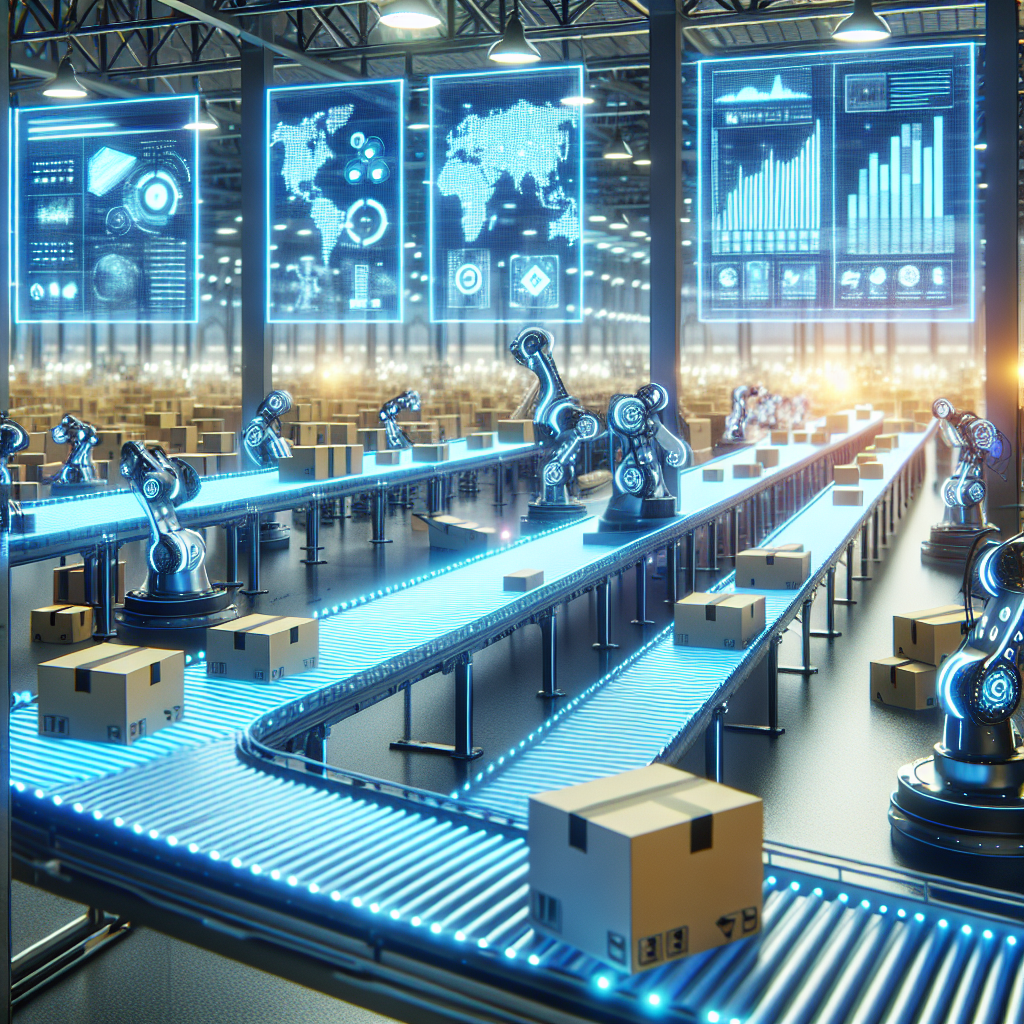Logistics plays a crucial role in the success of any business. From managing inventory to ensuring timely delivery of goods, efficient logistics operations are essential for maximizing customer satisfaction and minimizing costs. With the rise of e-commerce and global supply chains, the pressure on logistics operations has only increased in recent years. In response to these challenges, many companies are turning to AI-powered automation and robotics to improve the efficiency of their logistics processes.
AI-powered automation and robotics have the potential to revolutionize the logistics industry by streamlining operations, reducing errors, and increasing productivity. By leveraging the power of artificial intelligence, companies can optimize their supply chain management, improve route planning, and enhance warehouse operations. In this article, we will explore how AI-powered automation and robotics are transforming the logistics industry and discuss the benefits of adopting these technologies.
Benefits of AI-powered Automation and Robotics in Logistics
1. Improved Efficiency: One of the primary benefits of AI-powered automation and robotics in logistics is improved efficiency. By automating repetitive tasks such as order processing, inventory management, and transportation planning, companies can reduce the time and resources required to complete these tasks. This not only increases productivity but also allows employees to focus on more strategic and value-added activities.
2. Enhanced Accuracy: Automation and robotics can help reduce errors and improve accuracy in logistics operations. AI-powered systems can analyze large volumes of data to identify patterns and trends, leading to more accurate demand forecasting and inventory management. By minimizing errors in order processing and shipment tracking, companies can improve customer satisfaction and reduce the risk of costly mistakes.
3. Cost Savings: By automating routine tasks and streamlining operations, companies can reduce labor costs and improve overall cost efficiency. AI-powered systems can optimize route planning to minimize fuel consumption and transportation costs, while robotics can increase the speed and accuracy of warehouse operations. By leveraging these technologies, companies can achieve significant cost savings and improve their bottom line.
4. Scalability: AI-powered automation and robotics are highly scalable, allowing companies to easily adapt to changing market conditions and business needs. Whether it’s managing seasonal fluctuations in demand or expanding into new markets, these technologies can help companies scale their operations quickly and efficiently. This flexibility is particularly valuable in today’s fast-paced and competitive business environment.
5. Improved Customer Experience: By streamlining logistics operations and reducing errors, companies can enhance the overall customer experience. AI-powered systems can provide real-time tracking of shipments, improve delivery times, and ensure accurate order fulfillment. This not only increases customer satisfaction but also builds brand loyalty and helps companies stand out in a crowded marketplace.
6. Safety and Compliance: Automation and robotics can also improve safety and compliance in logistics operations. By automating hazardous or repetitive tasks, companies can reduce the risk of workplace injuries and ensure compliance with industry regulations. AI-powered systems can also analyze data to identify potential safety risks and take proactive measures to prevent accidents.
FAQs
Q: What are some common applications of AI-powered automation and robotics in logistics?
A: Some common applications of AI-powered automation and robotics in logistics include inventory management, order processing, route planning, warehouse operations, and transportation optimization.
Q: How can AI-powered systems improve inventory management?
A: AI-powered systems can analyze historical data to predict demand, optimize inventory levels, and identify trends and patterns that can help companies make more informed decisions about their inventory management.
Q: What are the benefits of using robotics in warehouse operations?
A: Robotics can increase the speed and accuracy of warehouse operations, reduce labor costs, and improve overall efficiency. By automating tasks such as picking, packing, and sorting, companies can streamline their operations and minimize errors.
Q: How can AI-powered systems improve route planning and transportation optimization?
A: AI-powered systems can analyze data on traffic patterns, weather conditions, and delivery schedules to optimize route planning and transportation logistics. By minimizing travel time and fuel consumption, companies can reduce costs and improve delivery times.
Q: What are some challenges associated with implementing AI-powered automation and robotics in logistics?
A: Some challenges associated with implementing AI-powered automation and robotics in logistics include the initial cost of investment, concerns about job displacement, and the need for ongoing training and maintenance of these technologies. However, the benefits of adopting these technologies often outweigh these challenges in the long run.
In conclusion, AI-powered automation and robotics have the potential to transform the logistics industry by improving efficiency, accuracy, and cost savings. By leveraging the power of artificial intelligence, companies can streamline their operations, optimize their supply chain management, and enhance the overall customer experience. As technology continues to advance, the adoption of AI-powered automation and robotics in logistics will become increasingly important for companies looking to stay competitive in a rapidly changing business environment.

